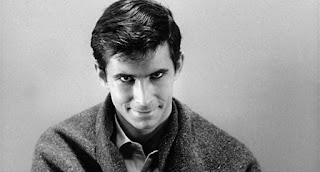Even those who haven't seen Psycho and aren't familiar with the film's specifics, you can almost bet they're aware of the iconic "shower scene" that changed cinema forever. To this day, Marion Crane's (played by Janet Leigh) shocking death is still considered by many to be the most famous scene in cinematic history.
There are so many components of this scene that broke cinematic barriers. First of all, the scene occurs at about three quarters of the movie. At this point, the audience is hooked on following the protagonist, expecting the conclusion, like the rest of the movie, to be centralized around her. Instead, Hitchcock throws the viewers for a complete loop by having her killed, and doing so in the least likely timing and setting.
As Marion is showering and preparing for bed during her first night at the Bates Motel, the shower curtain is abruptly opened, and she is brutally stabbed to death multiple times. In addition to arguably going down as one of the most famous scenes ever, many would also say its the most violent. After Psycho's release, it opened the door for films such as Bonnie and Clyde and The Wild Bunch to use similar torturous violence.
Michael Brooke, Screenonline curator at the British Film Institute describes the revolutionary impact the scene had for film audiences. "They had never seen anything quite like it before - the total shock of killing off a lead character a third of the way in, and just complete feeling of disorientation," said Brooke.
Another component of Hitchcock's film that had major influence after the fact was the manipulation of the killer, Norman Bates, morale and character. Before being exposed as the killer of Marion Crane's death, Hitchcock gives the audience the impression he could have no such involvement, as Bates is portrayed as an awkward, soft spoken man who couldn't hurt a fly.
Bates is in a tough position, taking care of his mentally ill mother while also juggling running the family motel, which is in a bad state. The combination of Bates loneliness and peculiar behavior with his difficult family matters force the audience to sympathize with him.
It is later discovered that this was all a ploy to fool the audience, as the sympathy for Bates flies out the window from the audience's perspective once it becomes clear that Bates was a psychopathic murderer.
These are just a couple examples of how Hitchcock pushed the envelope, testing cinematic standards and limitations many times during Psycho. The risk was well worth the reward, as the film immediately went down in history and allowed other films to expand their cinematic wings as well, and provide components of film that appeal to film audiences.



I didn't realize how the film had tested the boundaries for cinematic standards. This is clearly one of the reasons it was such a success at the then and is so notable today.
ReplyDelete